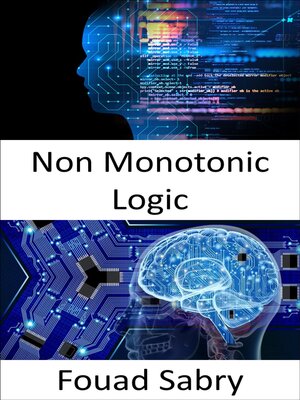
Sign up to save your library
With an OverDrive account, you can save your favorite libraries for at-a-glance information about availability. Find out more about OverDrive accounts.
Find this title in Libby, the library reading app by OverDrive.



Search for a digital library with this title
Title found at these libraries:
| Library Name | Distance |
|---|---|
| Loading... |
What Is Non Monotonic Logic
A formal logic is said to be non-monotonic if its conclusion connection does not follow a monotonic pattern. In other words, the purpose of non-monotonic logics is to capture and represent defeasible inferences. This refers to a type of inference in which reasoners form tentative conclusions, which allows reasoners to retract their conclusion(s) based on future data. Non-monotonic logics are designed to do this.The vast majority of formal logics that have been examined have a monotonic entailment relation, which indicates that the addition of a formula to a theory does not result in the trimming of its set of conclusions. Intuitively, the concept of monotonicity suggests that acquiring new information does not have the potential to narrow the scope of what is already known. A monotonic logic is incapable of handling a variety of reasoning tasks, including reasoning by default, abductive reasoning, key approaches to reasoning about knowledge, and belief revision.
How You Will Benefit
(I) Insights, and validations about the following topics:
Chapter 1: Non-monotonic logic
Chapter 2: Abductive reasoning
Chapter 3: Deductive reasoning
Chapter 4: Inductive reasoning
Chapter 5: Default logic
Chapter 6: Belief revision
Chapter 7: Defeasible reasoning
Chapter 8: Defeasible logic
Chapter 9: Abductive logic programming
Chapter 10: Logic
(II) Answering the public top questions about non monotonic logic.
(III) Real world examples for the usage of non monotonic logic in many fields.
(IV) 17 appendices to explain, briefly, 266 emerging technologies in each industry to have 360-degree full understanding of non monotonic logic' technologies.
Who This Book Is For
Professionals, undergraduate and graduate students, enthusiasts, hobbyists, and those who want to go beyond basic knowledge or information for any kind of non monotonic logic.







